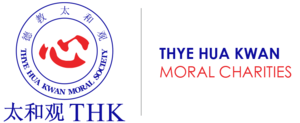Difference between revisions of "ANLY482 AY2016-17 T2 Group23 Silver Daisies Project Overview"
| Line 30: | Line 30: | ||
A long wait may be expected when there are no available MET drivers in the vicinity. Also, there are not much opportunities of "batching" (i.e. car sharing) as it is tough for our sponsor to schedule it. | A long wait may be expected when there are no available MET drivers in the vicinity. Also, there are not much opportunities of "batching" (i.e. car sharing) as it is tough for our sponsor to schedule it. | ||
| − | == | + | == Project Objectives == |
| − | The | + | The team is motivated by findings from our data exploration phase, where the team note that 6% of the time, the drivers could have waited for another 15 minutes or less to pick up another client from the same clinic before leaving. By waiting and ferrying an additional PNC, it will help reduce operational cost as well as free up capacity. Therefore, accurate prediction of appointment time helps our sponsor to schedule possible “Batching” and thus improves efficiency and reduce the number of trips. |
| − | + | ||
| + | The Multiple Linear Regression Analysis will potentially contribute to: | ||
| + | * Identification of significant variables affecting Appointment Duration | ||
| + | * Prediction of Appointment Duration | ||
| + | * Allows “Batching” when picking up clients | ||
| + | |||
| + | And the desired impact of: | ||
| + | * Reduction of operational cost due to increased efficiency | ||
| + | * Improved satisfaction of Person Needing Care due to possible shorter waiting time | ||
| + | * Freeing up capacity to cater for future increased demand | ||
== Objective == | == Objective == | ||
Revision as of 15:43, 8 April 2018
Contents
Business Problem
Persons needing care (PNC) are ferried to and from their homes to clinics/hospitals for medical appointments. After the appointment has ended, PNCs will call up the administrative staff and the administrative staff will deploy any available MET driver to pick them up. A long wait may be expected when there are no available MET drivers in the vicinity. Also, there are not much opportunities of "batching" (i.e. car sharing) as it is tough for our sponsor to schedule it.
Project Objectives
The team is motivated by findings from our data exploration phase, where the team note that 6% of the time, the drivers could have waited for another 15 minutes or less to pick up another client from the same clinic before leaving. By waiting and ferrying an additional PNC, it will help reduce operational cost as well as free up capacity. Therefore, accurate prediction of appointment time helps our sponsor to schedule possible “Batching” and thus improves efficiency and reduce the number of trips.
The Multiple Linear Regression Analysis will potentially contribute to:
- Identification of significant variables affecting Appointment Duration
- Prediction of Appointment Duration
- Allows “Batching” when picking up clients
And the desired impact of:
- Reduction of operational cost due to increased efficiency
- Improved satisfaction of Person Needing Care due to possible shorter waiting time
- Freeing up capacity to cater for future increased demand
Objective
- Analyze current revenue and cost structure of the MET Program
- Improve efficiency of current operations
- Understanding needs of clients of MET scheme
- Evaluate the need to increase capacity to meet potential rise in demand for MET services
Methodology
Improve efficiency of current operations
The team would first like to gain a better understanding of how the MET operates. This can be achieved by observing the daily operations of MET, such as scheduling of transport for clients, actual transportation process, current system to allocate manpower (drivers and nurses), and how the route taken is selected. Our team had scheduled an observation field study with THKMC so as to comprehensively document the processes on a process map.
Understanding needs of clients of MET scheme
The team will evaluate the current success of MET scheme by looking into the demand and current profiles of clients. This is so that we can identify the characteristics of their current clients, and further understand what can be done to reach out to other clients who may require such assistance. For example, we may look into variables such as medical conditions, age or subsidies scheme.
Evaluate the need to increase capacity to meet potential rise in demand for MET services
The team will first evaluate current capacity by analyzing the current fleet of vehicles and current number of employees. By conducting time-series analysis on the demand of MET service, we seek to forecast the optimal capacity for the future.
Data
Statistical Software
- SAS
- JMP
- Tableau
Metadata
2 Sets of data has been provided by THKMC, 1) Clients of MET - Name, Addresses, Appointment dates and time, Purpose of visit, Drivers and vehicles. 2) Drivers and Vehicles Data - Driver's driving hours, Vehicle runtime, Distance drove, Number of trips
